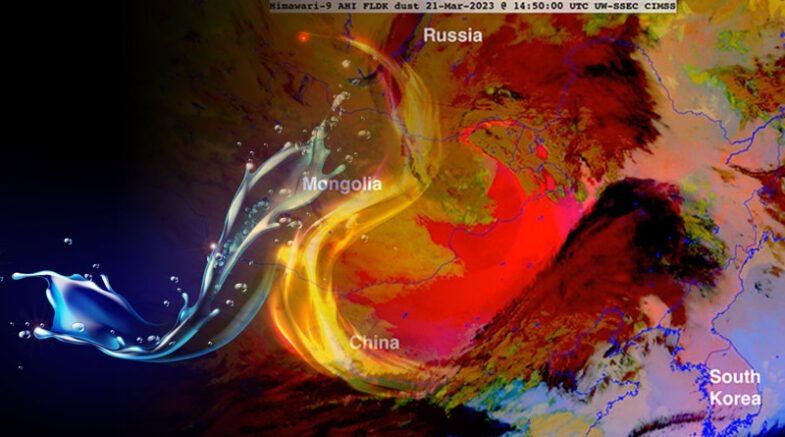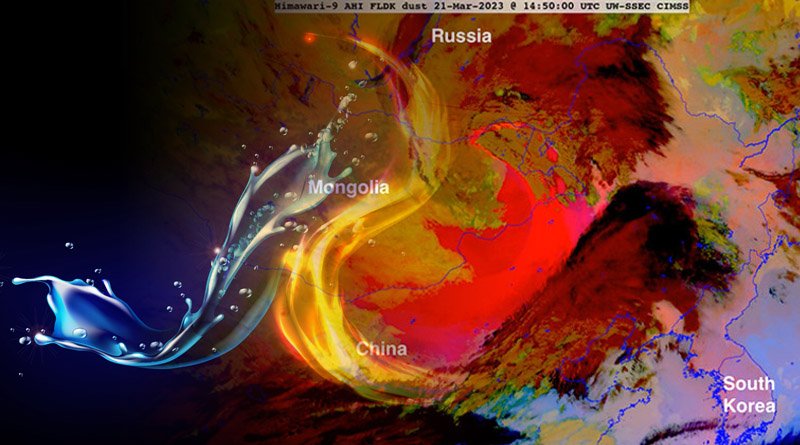Storm developed as tightly juxtaposed areas of high & low atmospheric pressure generated strong winds that lofted massive amounts of dust over Mongolia in late March dust storm.

The luminescent colours and swirling patterns in the satellite views demonstrate how imagery at the intersection of science and art can provide beautiful and revealing perspectives on atmospheric events. The false-color views, which are an illustration of what is known as dust RGB imagery, were produced using various infrared light wavelengths to differentiate between clouds and airborne dust both during the day and at night.
The storm developed as tightly juxtaposed areas of high and low atmospheric pressure generated strong winds that lofted massive amounts of dust over Mongolia in the late March dust storm.
The storm was caused by strong winds that lofted a vast blanket of dust over the Gobi Desert and blew it into eastern China. The comma-shaped low-pressure system then whisked the dust all the way into northeastern China.
Visibility in Beijing decreased n March 22 as the dust storm moved into eastern China, and air quality sensors there detected extremely high levels of particulate matter. Over 560 million people were affected by the dust in total.
Steven Miller, senior research scientist at the Cooperative Institute for Research in the Atmosphere stated that, “I think of RGB imagery as a place where science meets art.” The colours maximise information about a complex scene in a way that meteorologists can quickly interpret while also being visually appealing.
According to Miller, “the RGB must clearly communicate multiple features unambiguously within a single display” for it to be most useful. It is easy to see how the comma-shaped low-pressure system is evolving and how much dust it is covering. Even so, the Dust RGB imagery conveys more information about what’s going on in the atmosphere.
Red, green, and blue colour “components”—also known as “colour guns,” a term derived from the electron guns at the back of vintage cathode-ray tube televisions, which combine these three primary colours at different intensities to form all the possible colors—are used to create RGB imagery by combining two or more ABI channels, channel differences, or more complex operations.
